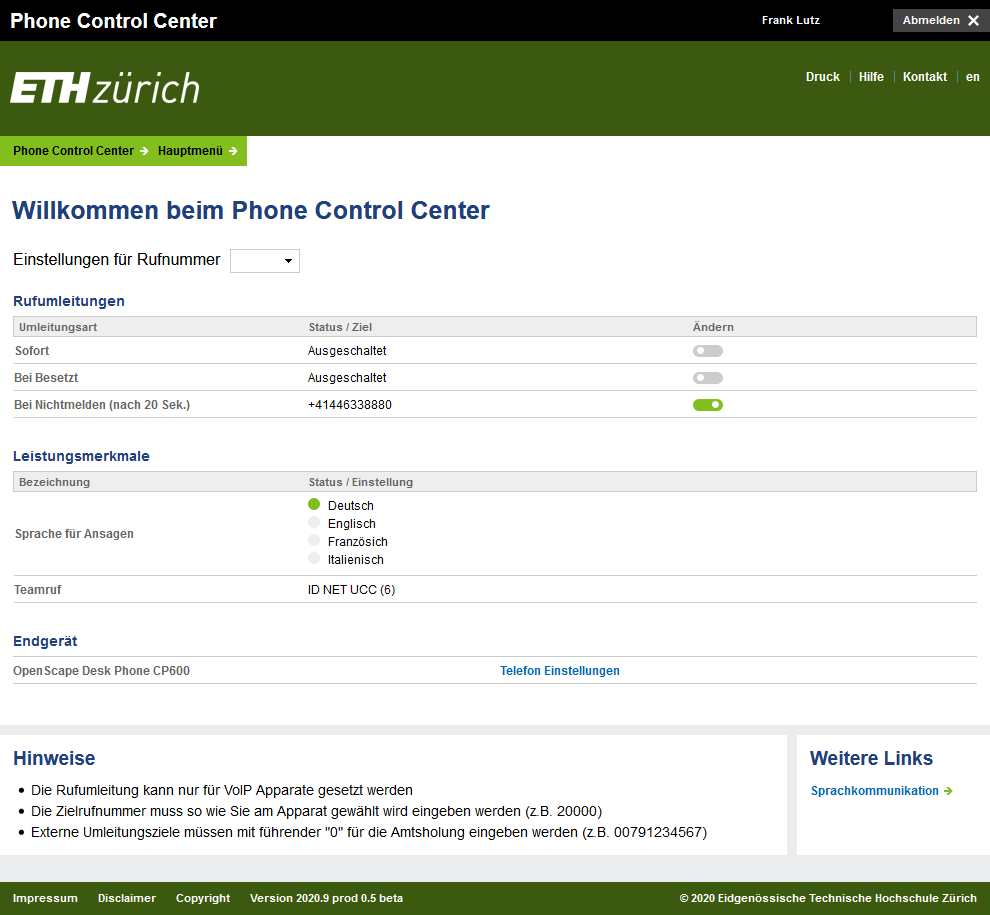Covid: the Fight against IT Bottlenecks
High network performance at ETH Zurich was no longer required during the Covid crisis, remote access to the server and laboratory infrastructure via VPN was in demand instead.

A clarification of the licence situation for VPN revealed that the site licence allows a reassuringly high level of parallel use for all ETH members.
- Demand increased from 1.2 Gbit/s to 6 Gbit/s. That’s five times more than before.
- The capacity of the hardware upgrade increased from 5 Gbps to 15 Gbps. That’s three times more than before.
- The old 5 Gbit/s would have been unable to handle the newly required 6 Gbit/s.
However, the new VPN hardware with three times the bandwidth capacity was only ready at the end of February. It was feverishly put into productive use within days and successfully implemented on Monday, 17 March 2020. Just in time for the lockdown, precisely one day before. The old hardware would have been unable to satisfy five times the bandwidth requirement of up to 6 Gbit/s. A strong expansion of the IP range for VPN prevented another expected bottleneck.
Division into fixed Teams
The lockdown meant that hundreds of network zones had to be adjusted, placing a heavy strain on the network team for three weeks. The network group can only provide its support services to the full extent from the ETH offices and, after a few days of the lockdown, split up into Team A and Team B. Due to the risk of infection, these two teams have never met in person since then, only virtually.
For cost reasons, there was no general authorisation for ETH telephone users to forward their ETH telephone number to a number outside of ETH. It was not possible to move desk telephones to home offices and they had to remain in the ETH office. To begin with, however, a mobility solution for the ETH telephone number was only installed in our laboratory. At the end of February, a forward-thinking decision was made to grant blanket diversion authorisation for all personal connections, which was then implemented on the 15 telephone exchanges within a few days.
As a rule, call forwarding must be set up on the device in the office. However, many people were unable to come to the physical office. The support organisations were also already very busy with the new situation. Processing the large amount of requests centrally was therefore not possible. As a consequence, the Phone Control Centre was developed within a very short period of time; it enables those responsible to independently control hotline numbers. Appropriate instructions were prepared to relieve the ITS Service Desk and the ISGs (IT Services Support Groups at ETH Zurich).

The change stop, which was ordered for six weeks due to the Covid situation, meant that only repairs were carried out on the physical infrastructure or user needs were fulfilled. This caused a delay of about two months to the entire hardware life cycle rollout, which very sadly affects the rollout of the new desktop telephones as well as the data centre, the new network core, WLAN access points and the floor switches. Fortunately, the floor switch production and supply chains in Asia were running again early enough to make equipping the new STE, OCT and GLC buildings on time possible. With an expanded protection concept, it was possible to gradually resume all rollout activities from May 2020, meaning that the entire team is now back in action.
While IT Security Centre employees are still working from home, the on-site monitoring of all construction projects was never interrupted and our UCT planners ensured that construction progress was not impaired. In some cases, this led to some projects (e.g. Alarmnet Phase 4) being completed up to six months early.
Contact
Armin Wittmann, Head of ICT Networks (ITS NET), IT Services


